ALLIGATOR
BEHAVIOR page 4j: FEEDING page 10 page 1 2 3 4 5 6 7 8 9 11
This
page was born 2/03/2023. Rickubis designed it.
(such as it
is.) Last update:
Images
and contents on this page copyright ©2001-2022 Richard M.
Dashnau
Alligators
favor prey
items that will fit inside their head. That
is, if they can swallow it
whole, then they will normally attack it. Alligators sometimes
eat deer
in the park, but the
larger ones were probably found carcasses, but small fawns
might have been live captures. Alligators
have eaten large nutria (as I've shown on this website). But,
most
of
the time, they will
eat things like fish, frogs, crayfish, snakes....
Their strong jaws make alligators well-adapted for
eating turtles. Prey can be almost any size relative
to the size of the alligator. I've seen 10-foot
alligators going
after prey that was no larger than their largest teeth (very
small
frogs
and fish). During 20 years of volunteering
at
Brazos Bend State Park, I've gathered many photos and video
clips
documenting how alligators survive in a natural environment.
This is
the 10th page collecting
feeding behaviors.
Brazos
Bend State Park
07/10/2022--during the
drought.
The images below and one
video
clip.
First, on 07/10/2022 an alligator was pushing through the
mud from
Pilant lake when
it found
a Stinkpot. The turtle had a slight advantage because
it
could
move over the mud, but even though the alligator had to
struggle to
move, it could still move faster than the turtle.
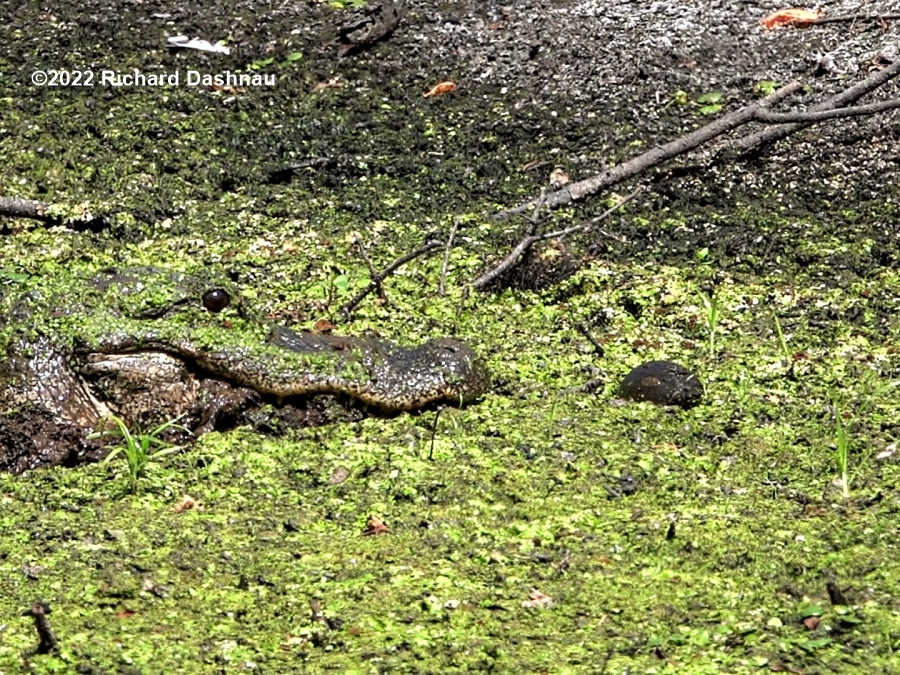
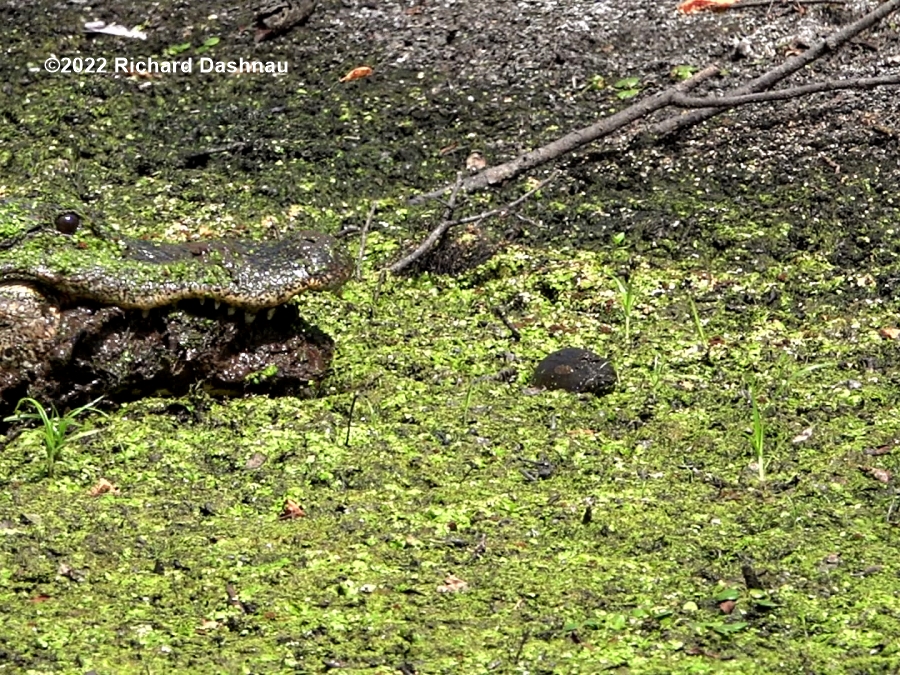
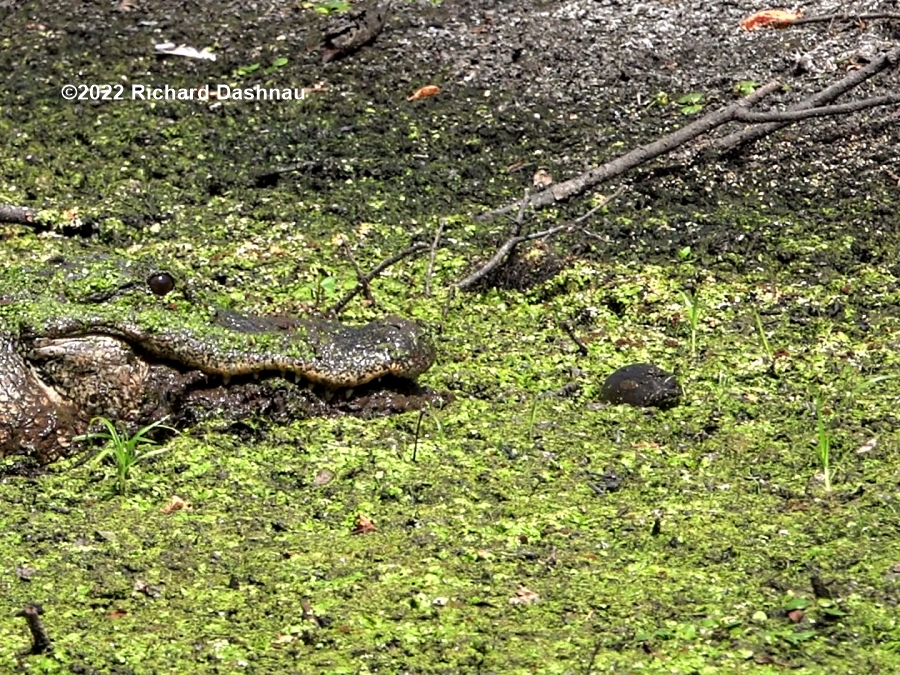
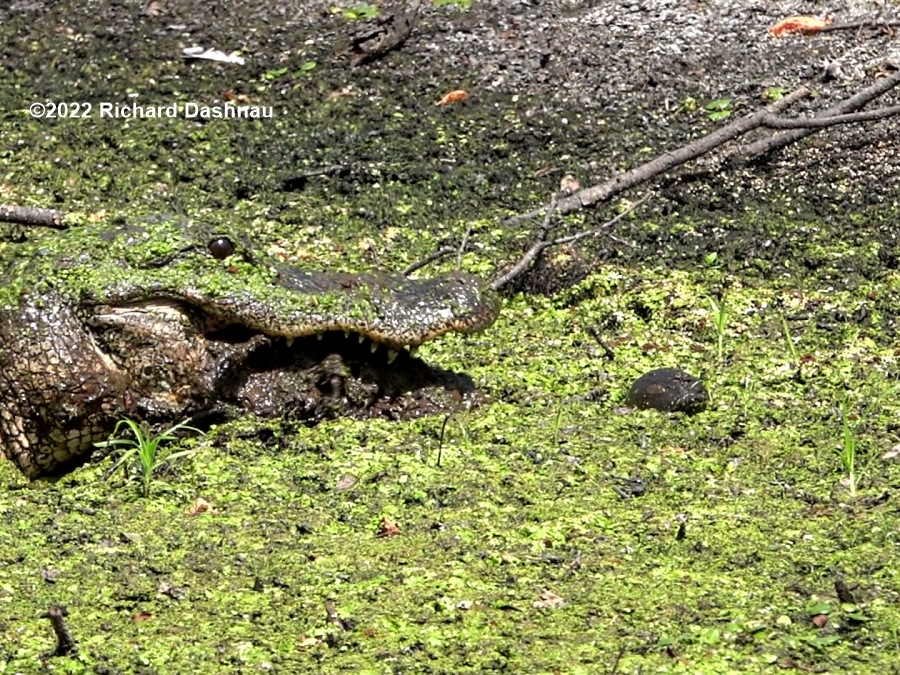
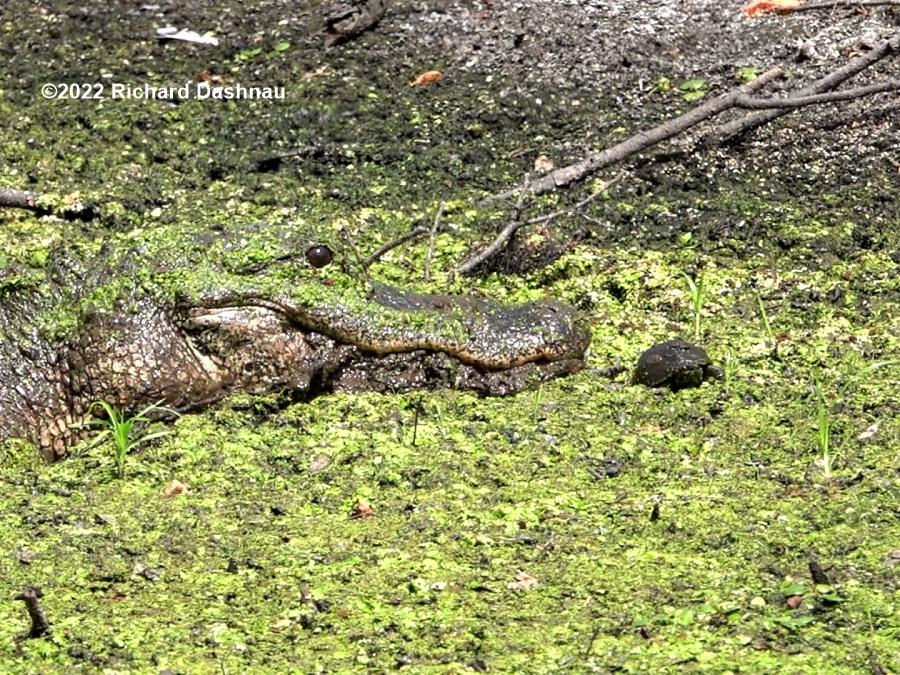
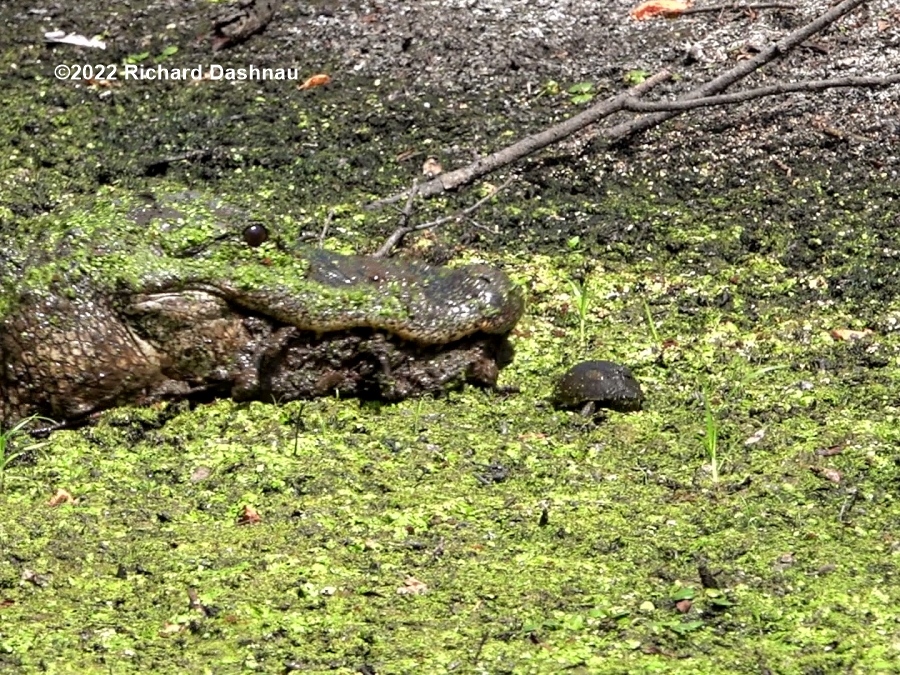
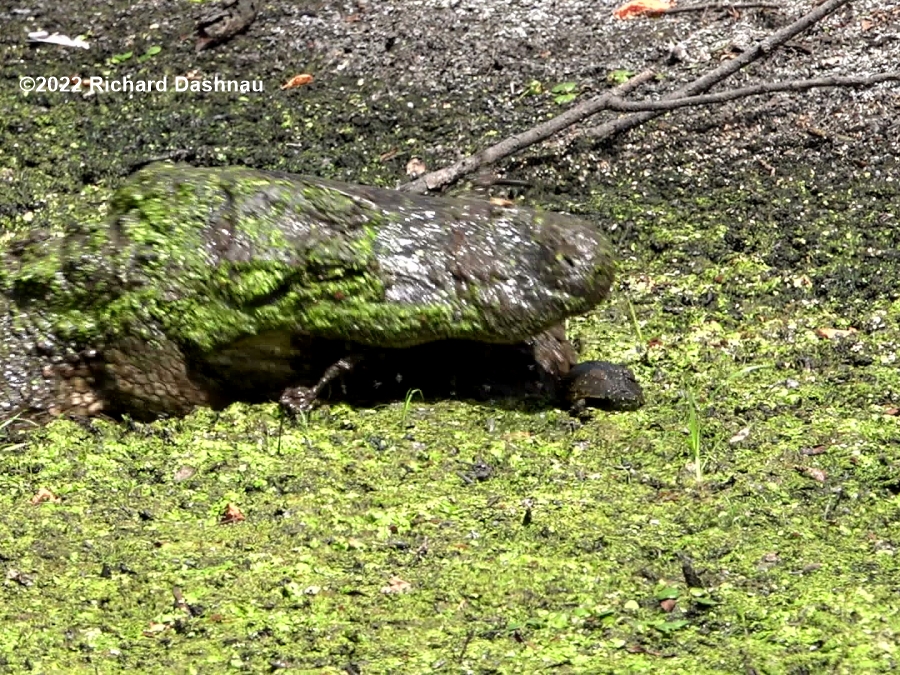
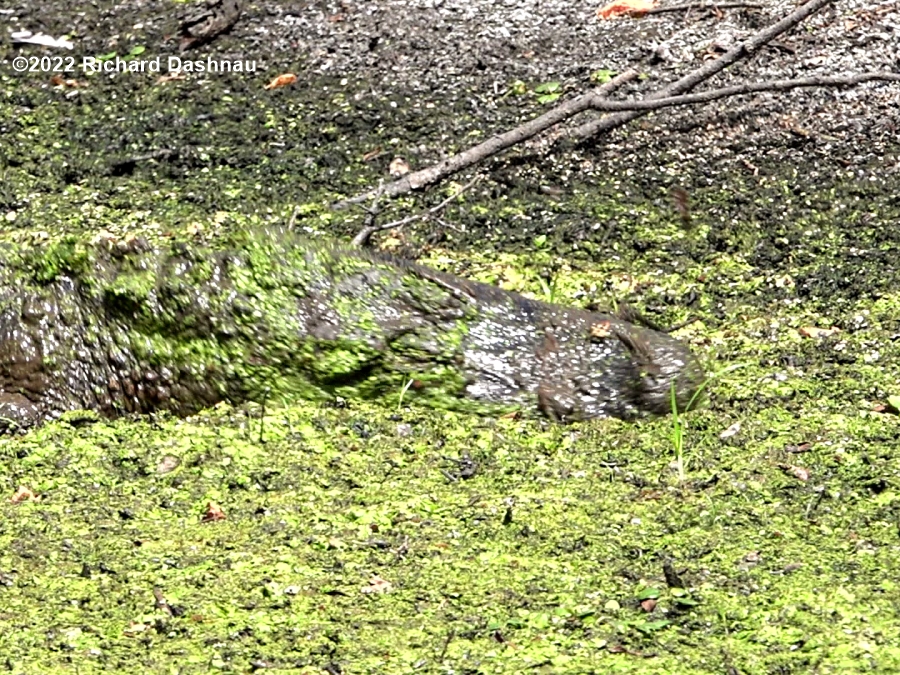
The alligator caught the
turtle, along with a huge mouthful of mud.
Even though an alligator's tongue has limited
mobility, this
gator was able to discard almost all of the mud while
keeping the
turtle inside its jaws!
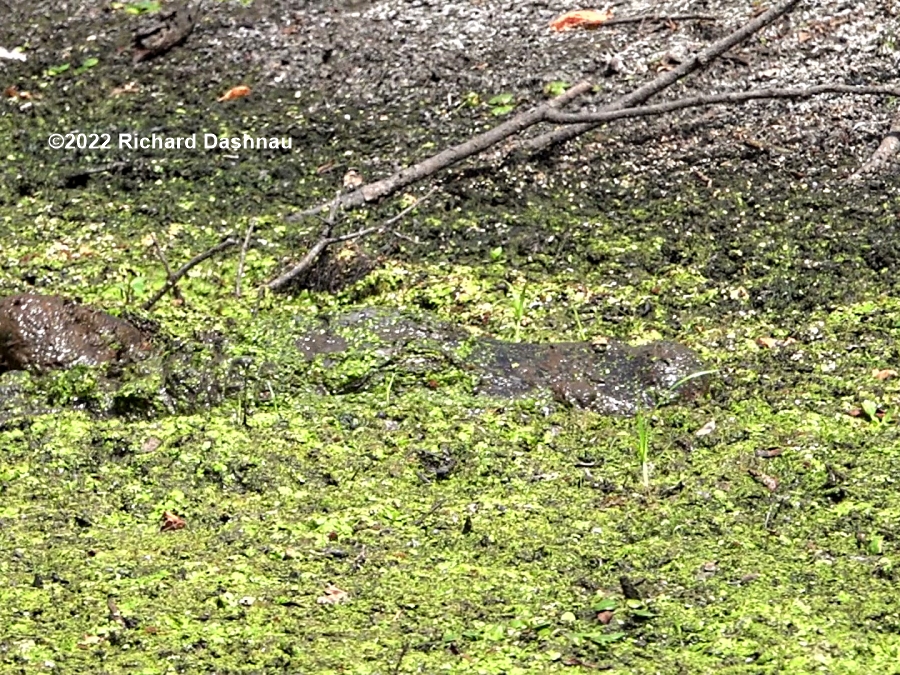
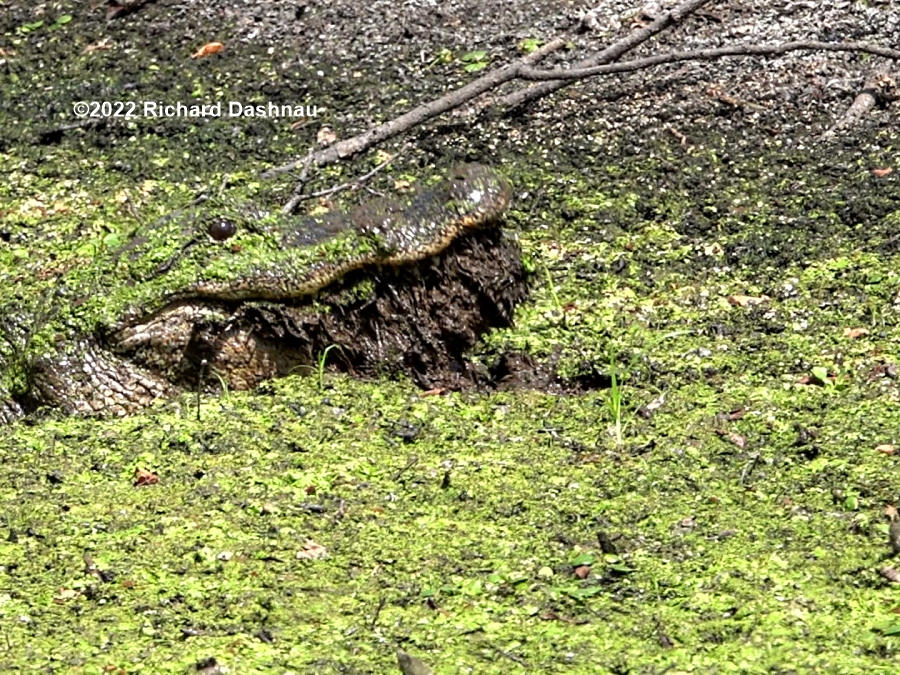
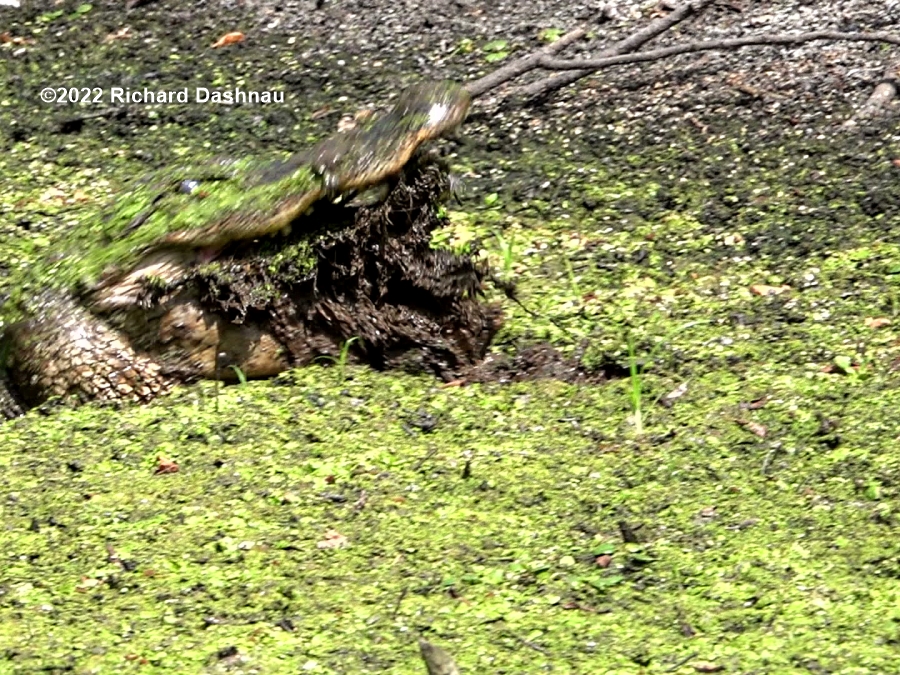
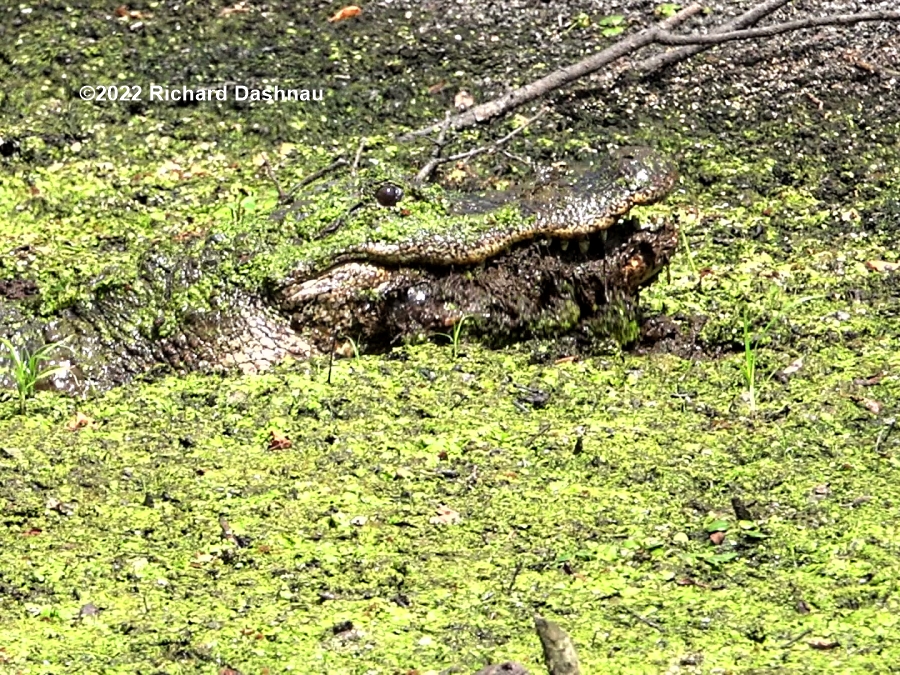
The alligator turned and
moved back to the center of the "channel".
The final images show that most of the mud has gone.
The
gator only squeezed the turtle a few times (without causing
the
usual
catastrophic shell damage) before swallowing it--while
avoiding
swallowing the stick which was also in its mouth.
That's all
visible in the video clip.
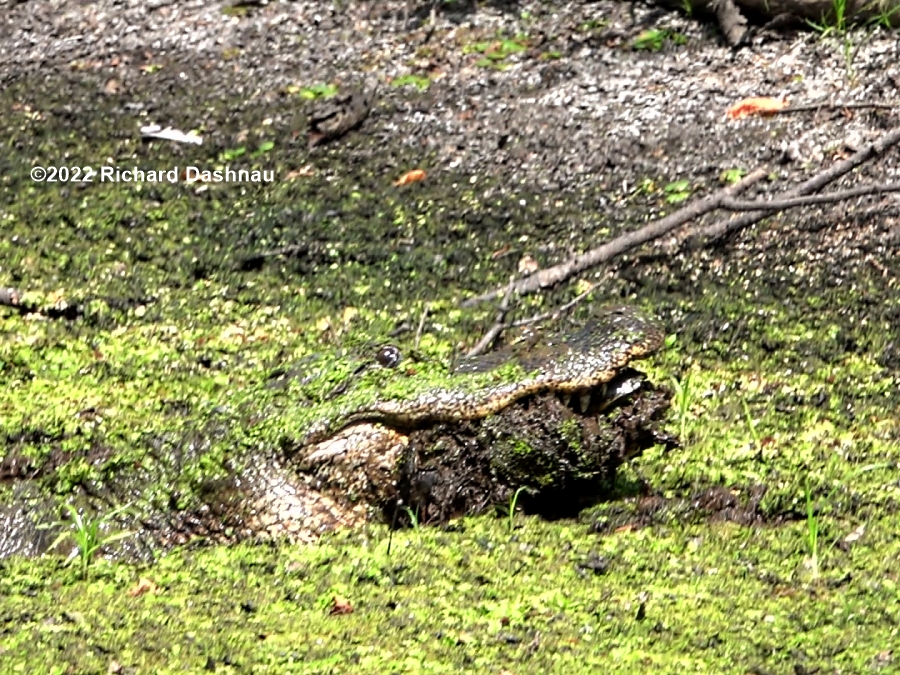
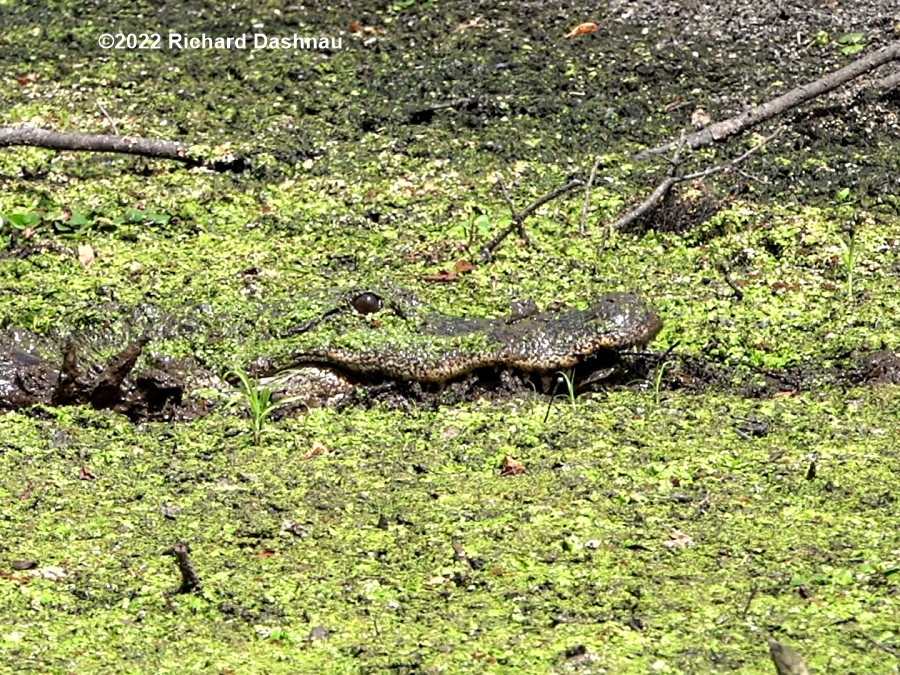
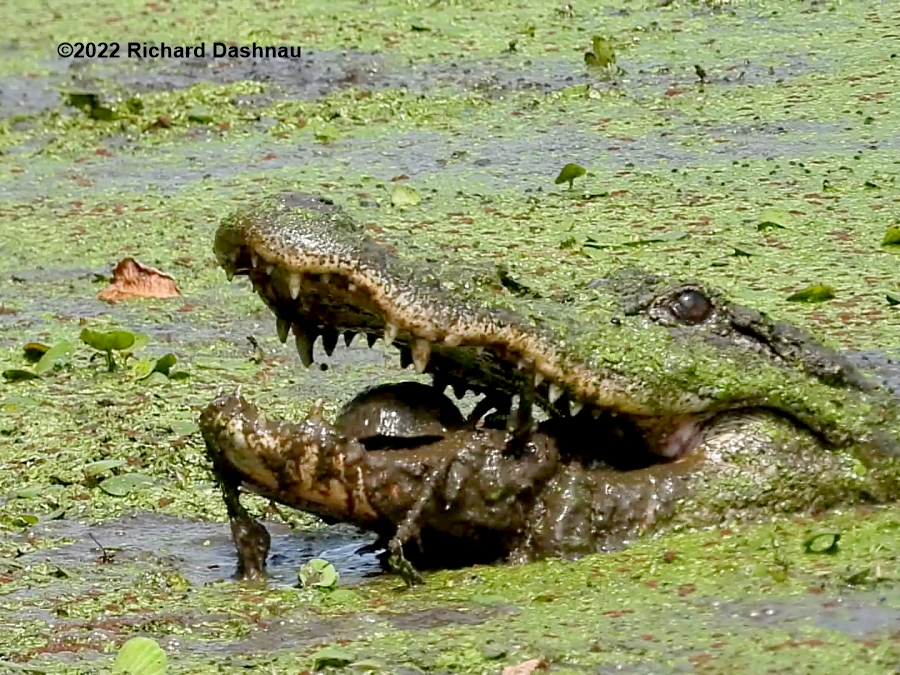
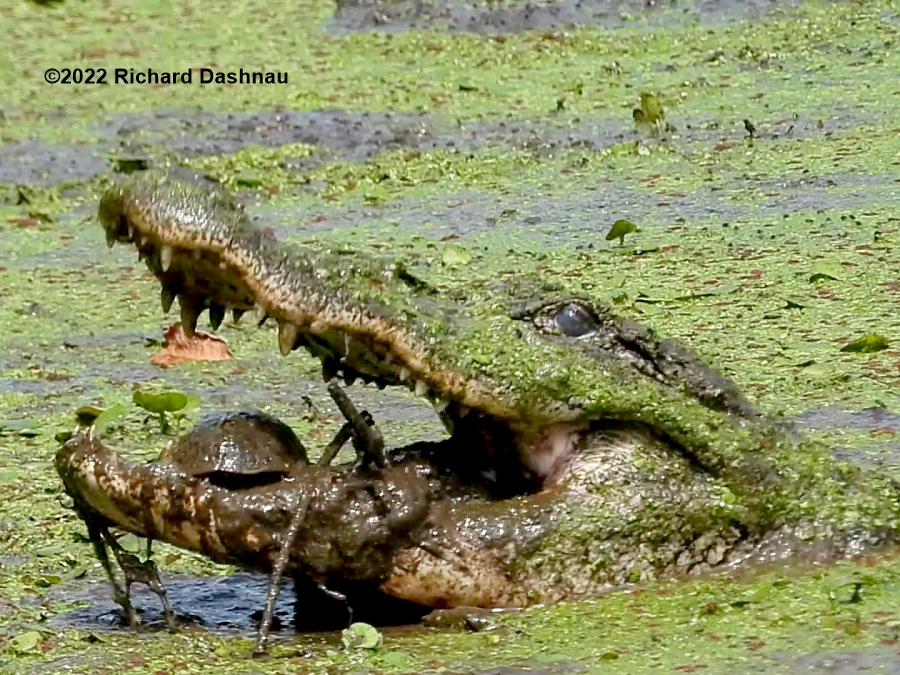
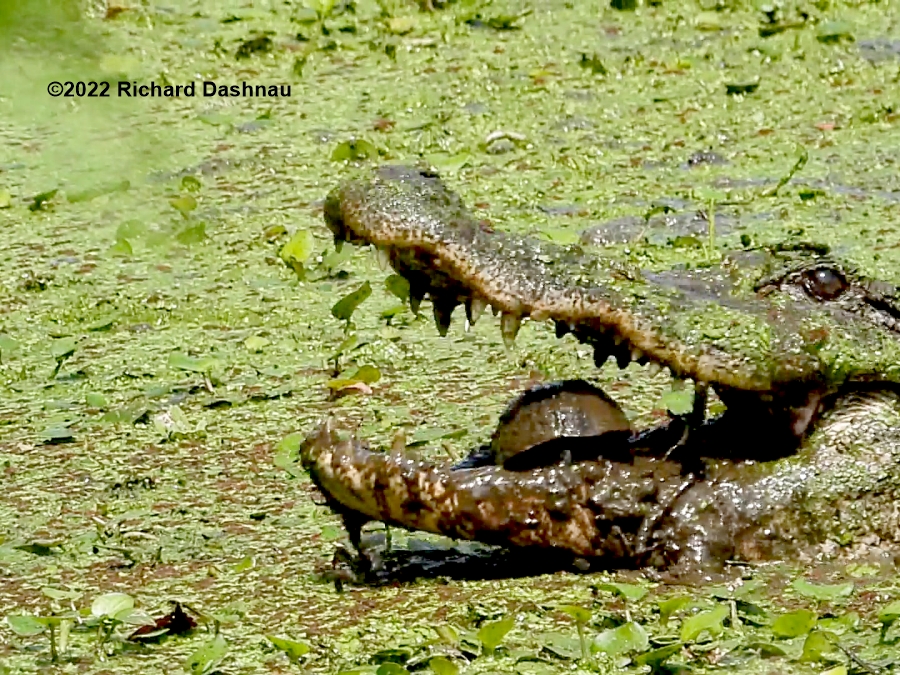

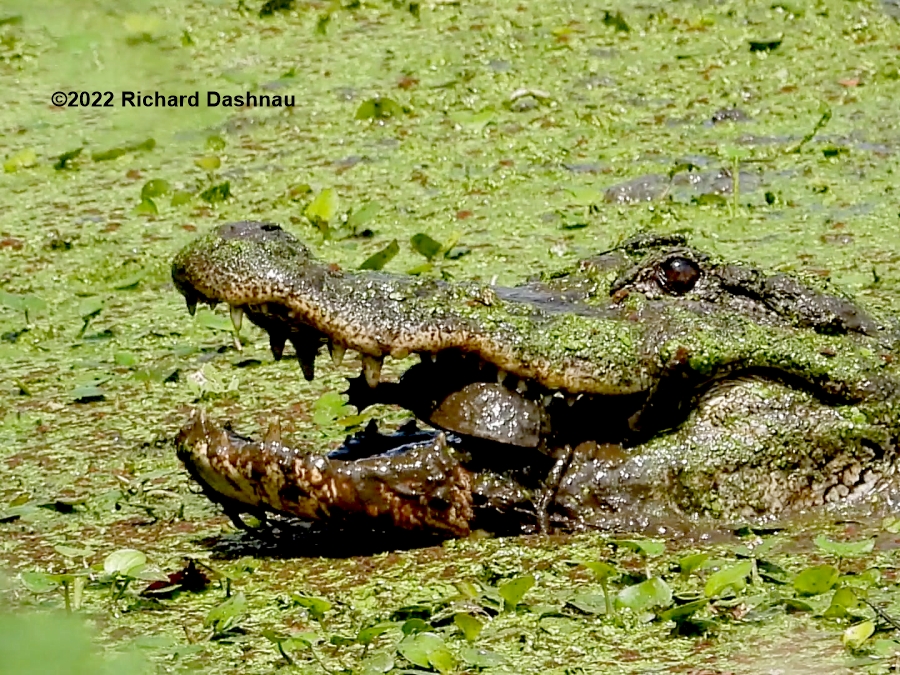
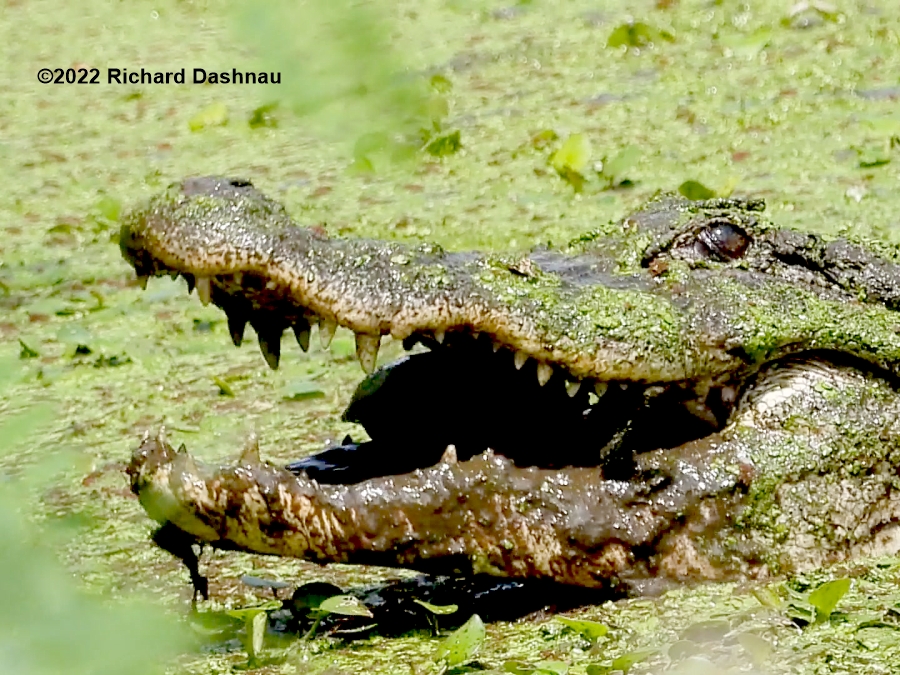
On 07/17/2022
Water
levels had dropped in Pilant Lake since May. Most of
the
animals
trapped by the shallows were eaten during June. A few
alligators still
worked
the shallows in July. Most of the remaining prey
seemed to be
tadpoles. All of those dimples on the surface of the
water
aren't
raindrops, but the faces of surfacing tadpoles.
This alligator is
moving forward while waving its front legs. It is herding
prey ahead of
it, then twisting its jaws sideways to catch it. The
water is
very shallow, and sometimes the mud
from the bottom is visible as the gator pushes through
it. Most
of the images shown
below are frames from this video.
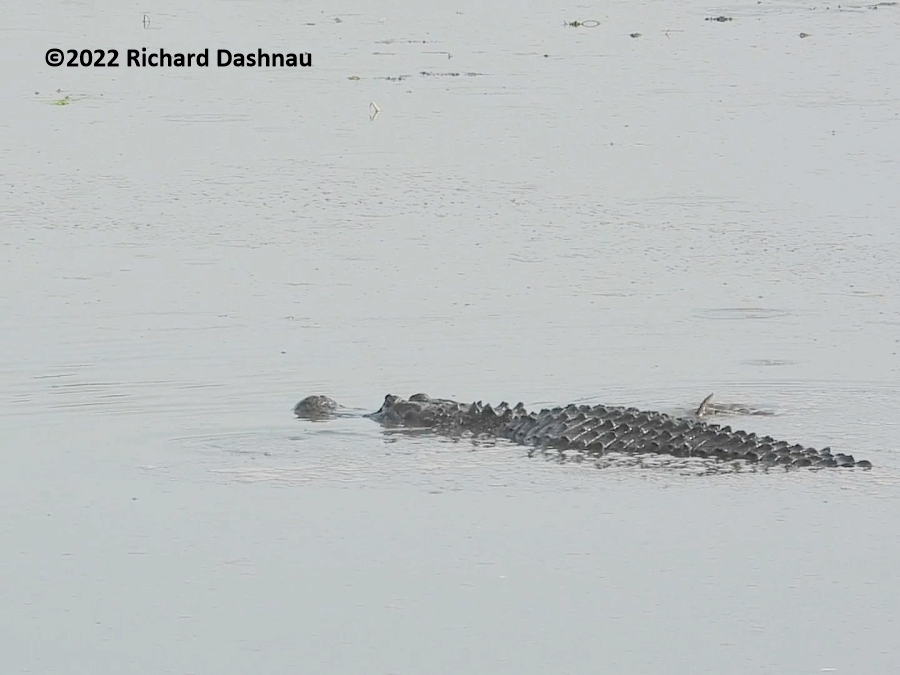
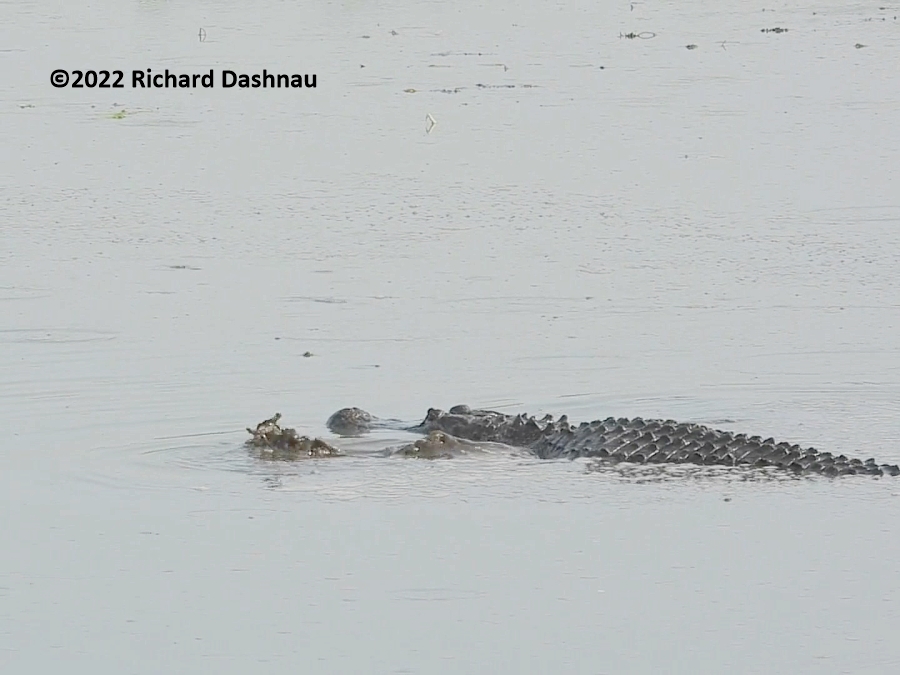
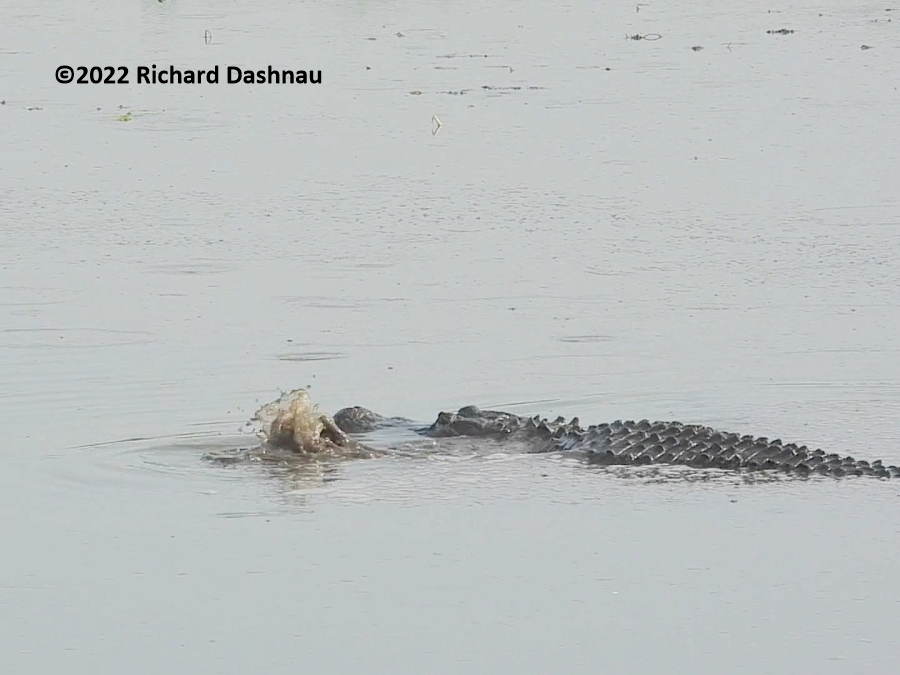
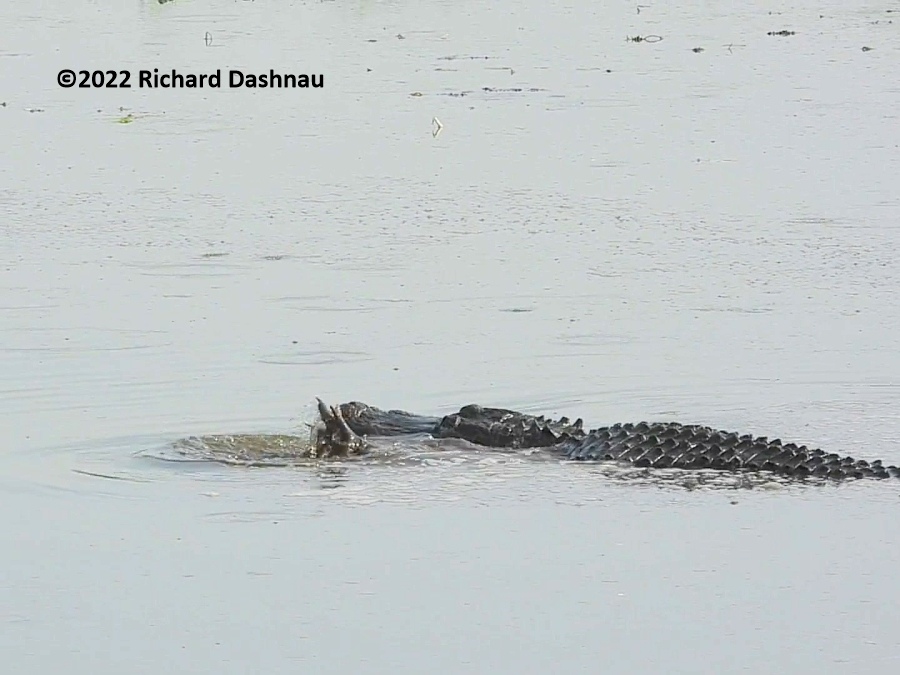
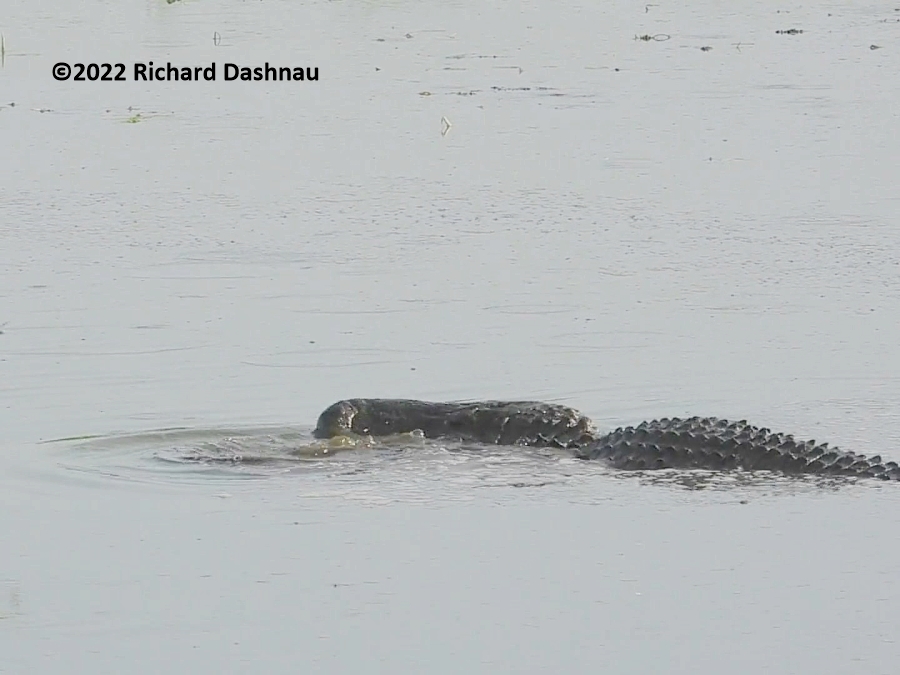
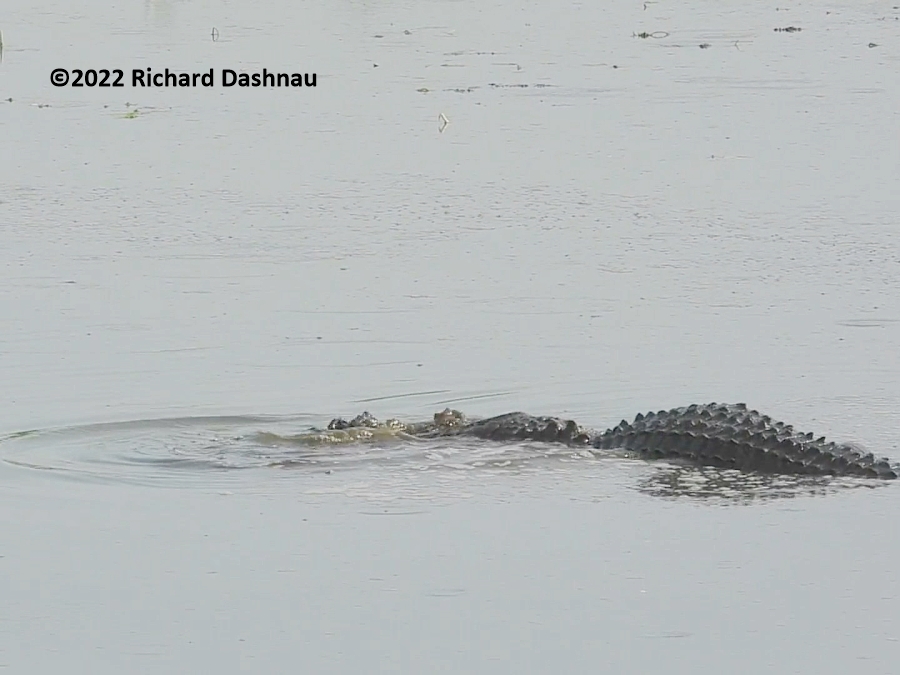
Nothing
was jumping out of the water as the alligator moved forward,
so I
assumed that very few fish were left among the tadpoles
being
pursued. This wasn't the only alligator foraging
here.
Unlike
a few weeks ago, the alligators on this day were very
tolerant of
each other. Another, smaller alligator was using the
same
technique and moving towards this one. They did not seem
to
be interested in each other at all. Both of them were
waving
their forelegs and twisting to catch prey. This is a
variation of the
"seining" behavior I've mentioned before, and which I've
also
described
in detail here.
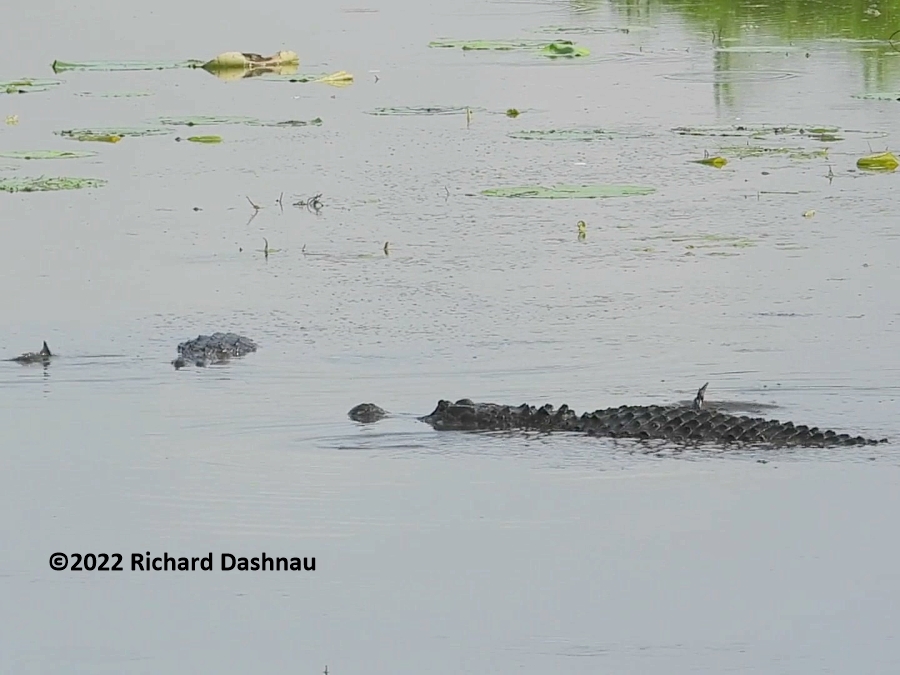
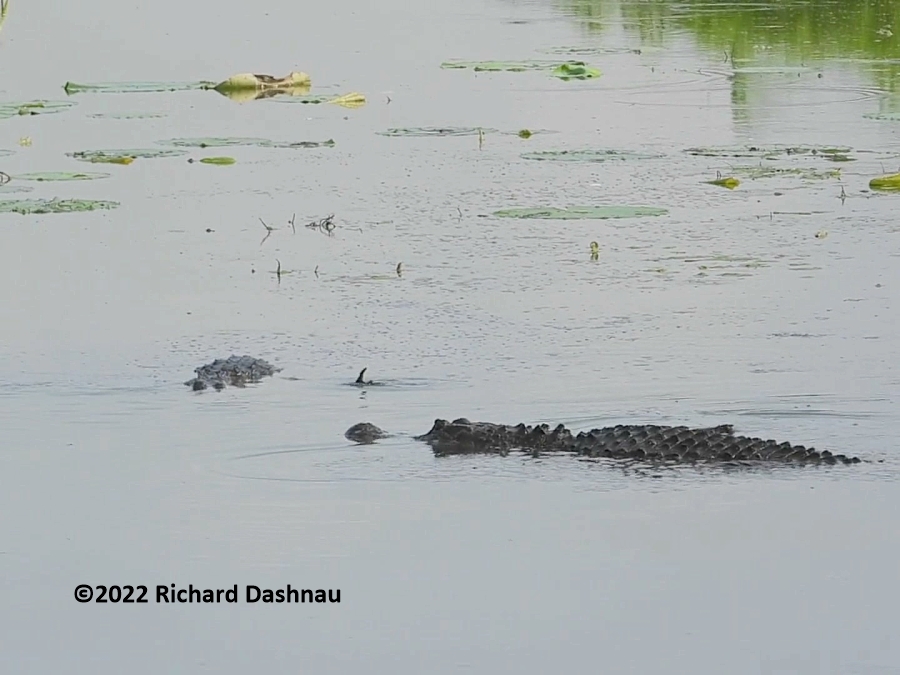
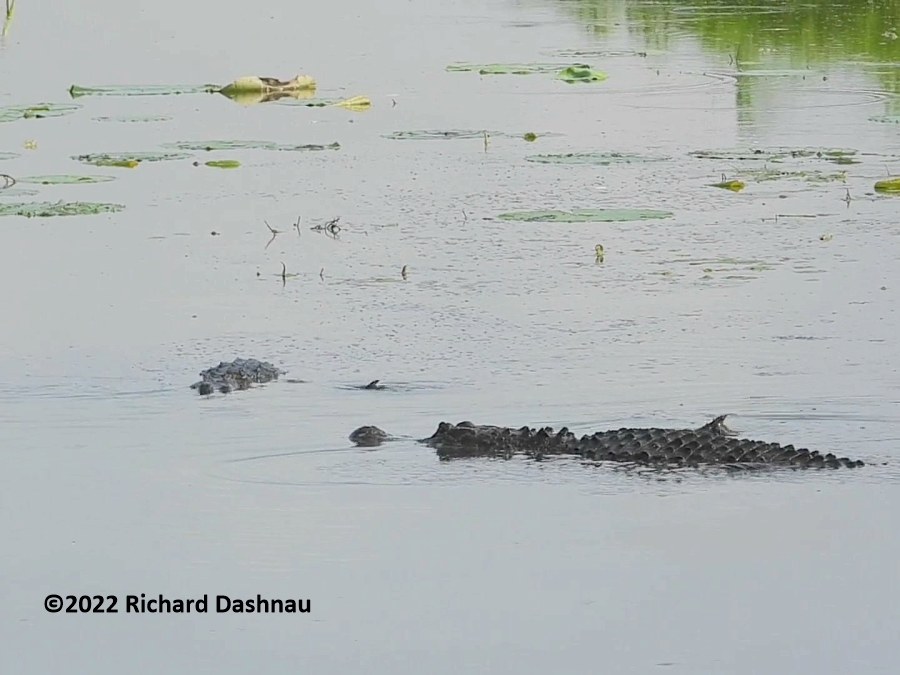
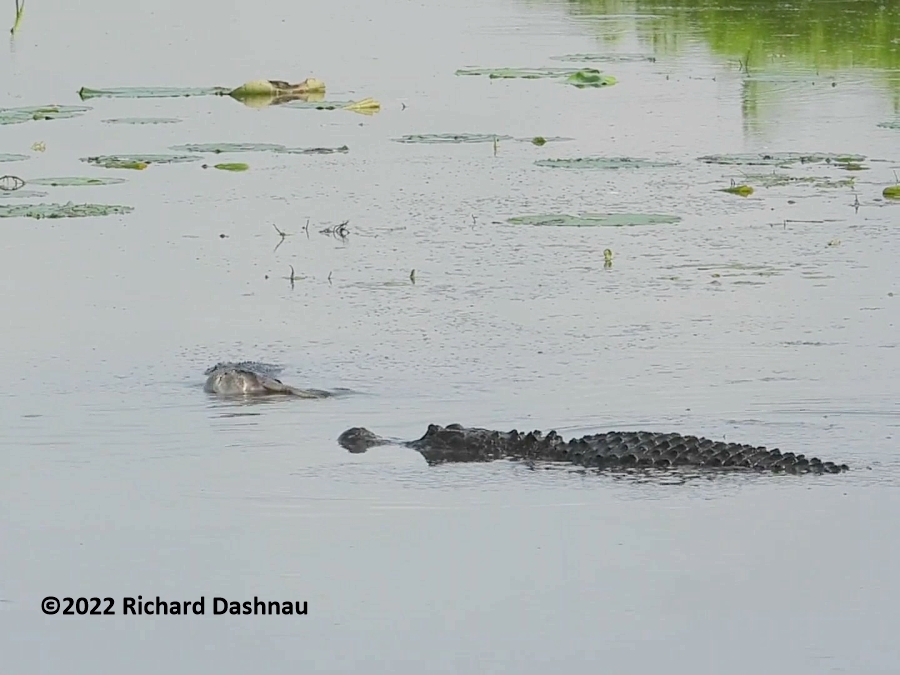
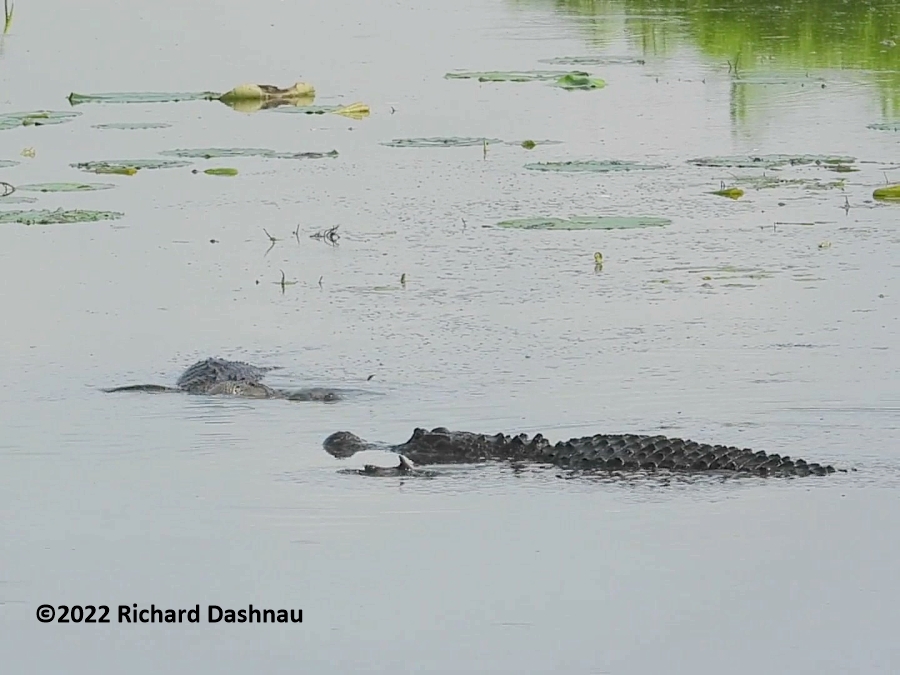
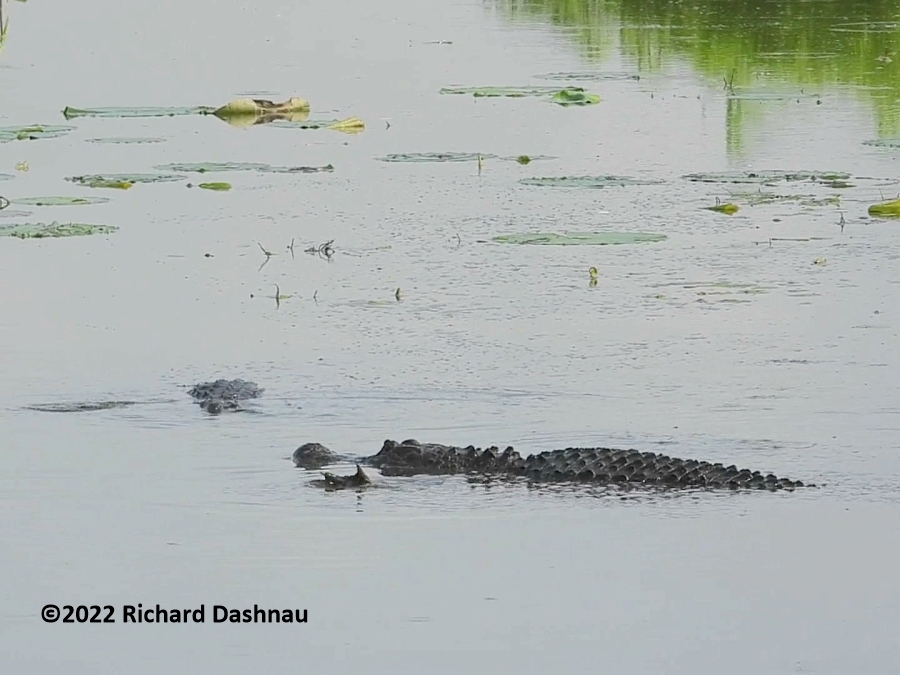
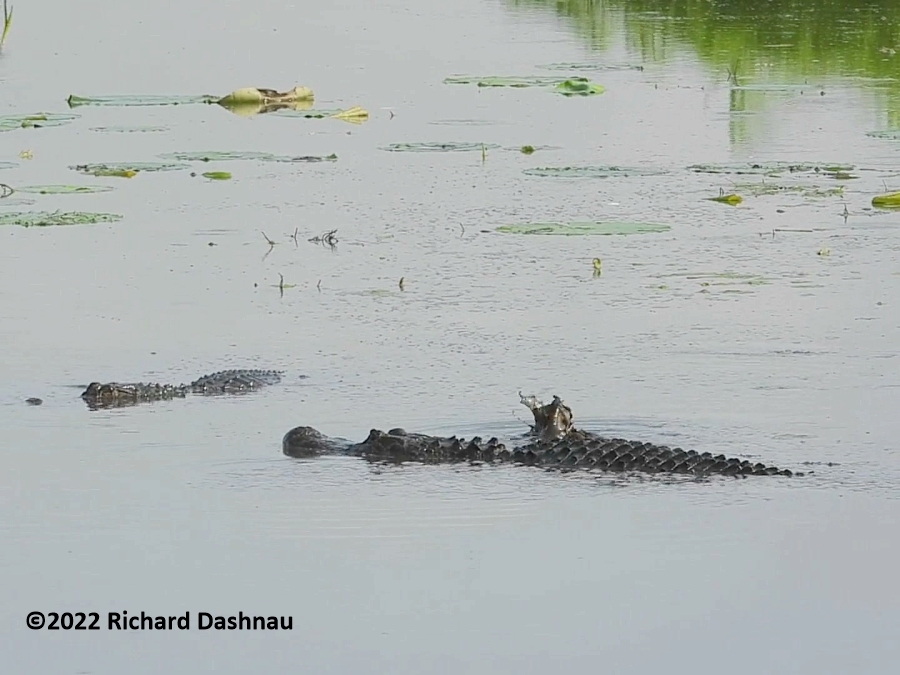
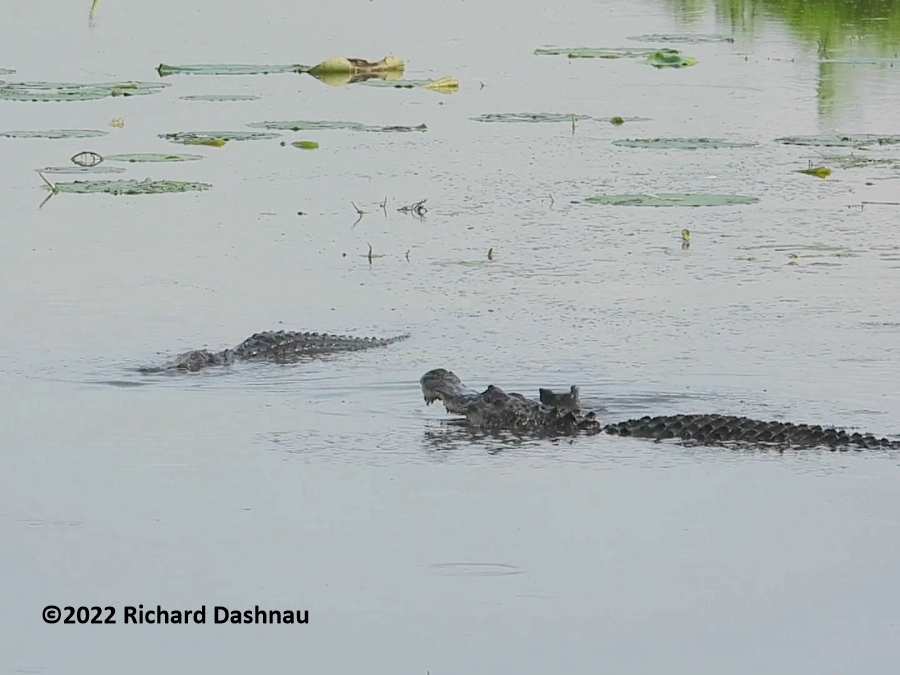
I
knew that at some point they would acknowledge each other,
and one
would probably just move away. I was mildly
surprised to
see the larger gator turn away. The
large alligator kept
moving,
eventually getting into the very soft, exposed muck. I think
that the
alligator had decided to look for better hunting elsewhere.
All
of those channels were not eroded by running water,
but probably
made by alligators as they pushed through the mud. Gators
followed
paths made by other gators, deepening the
trails. The water
flowing in the active channel (easily seen in
the
video) is being moved by the passage of the
alligator.
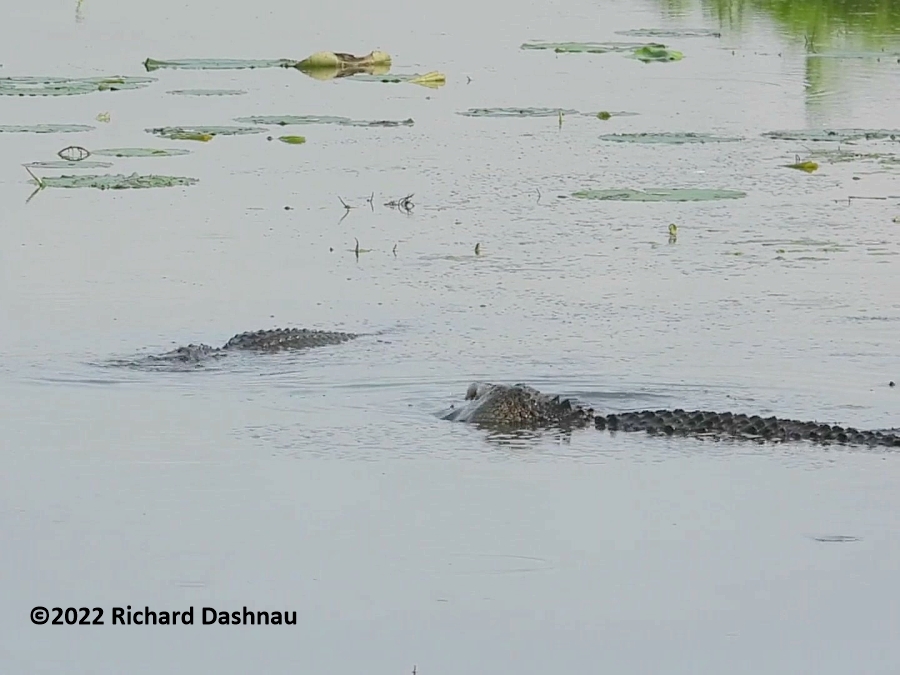
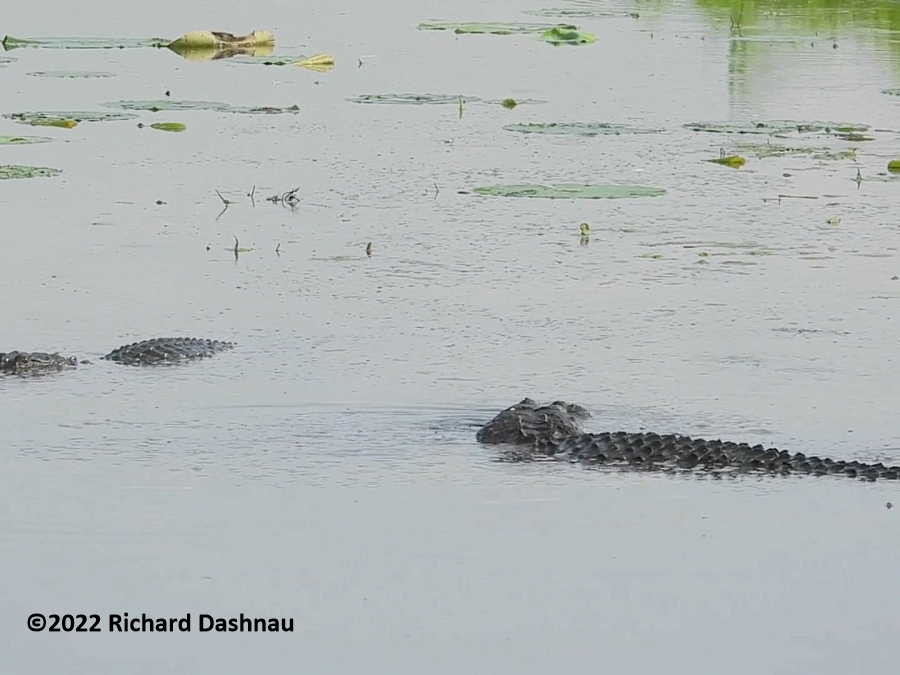
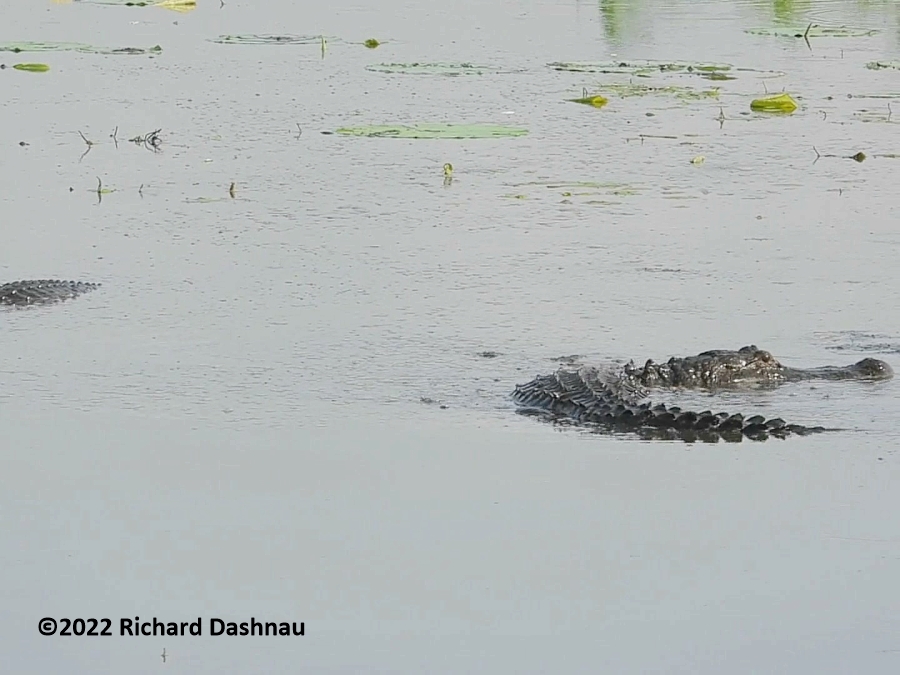
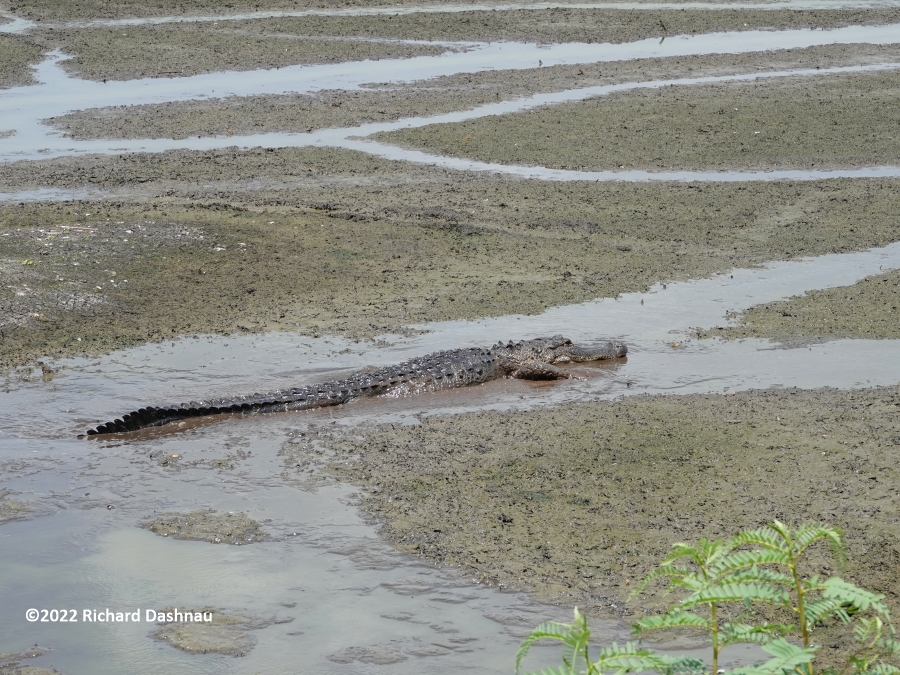
This
alligator
turned a little later and moved up to the edge of the
trail. Most of the time, an alligator that has
just
left the
water will pause at the edge of a trail before
continuing across. It's
usually just for a few minutes, but
sometimes for much longer. This one didn't pause
long before
crossing the trail into Pilant Slough.
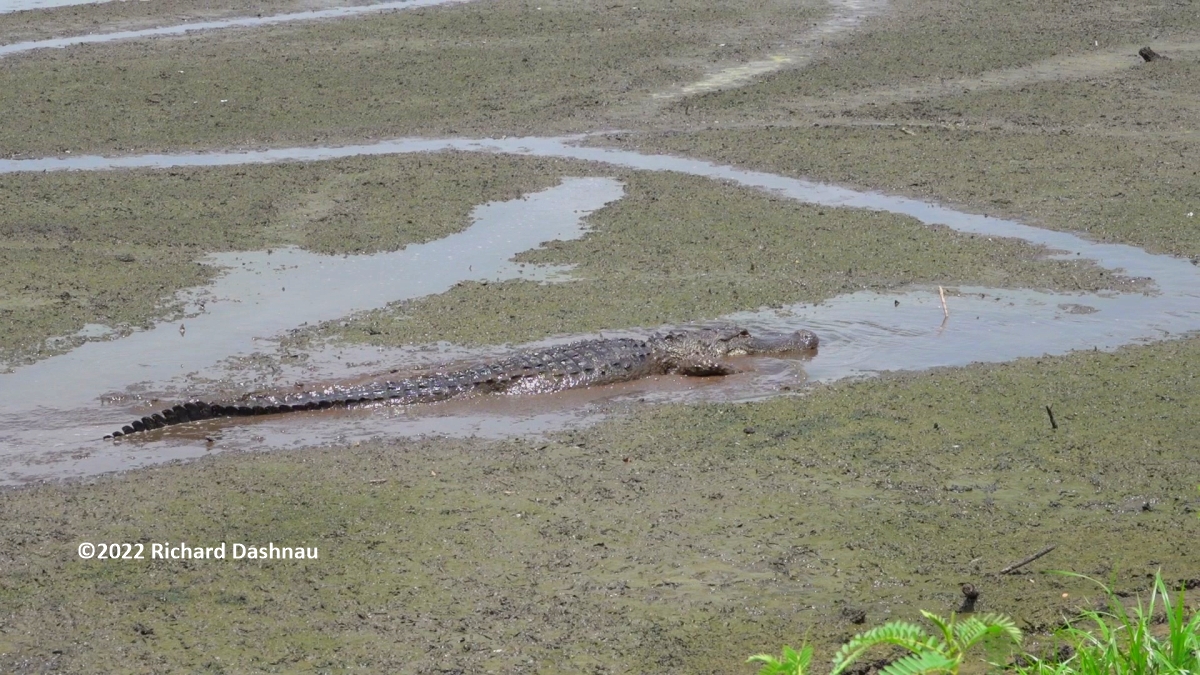
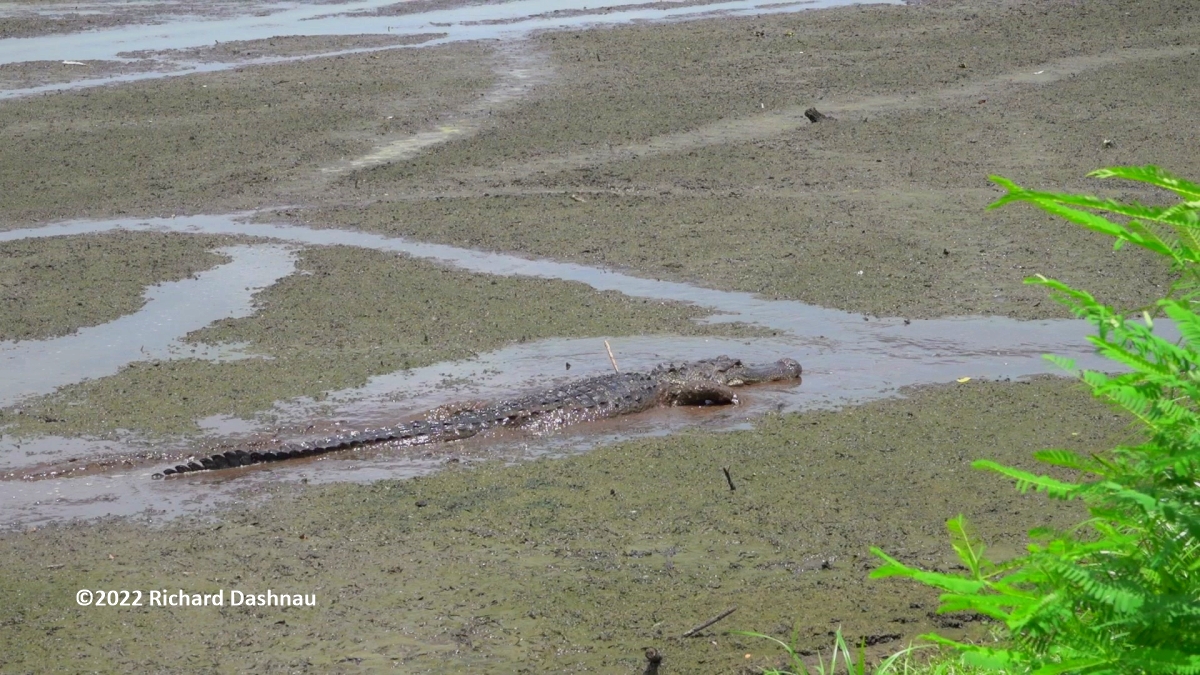
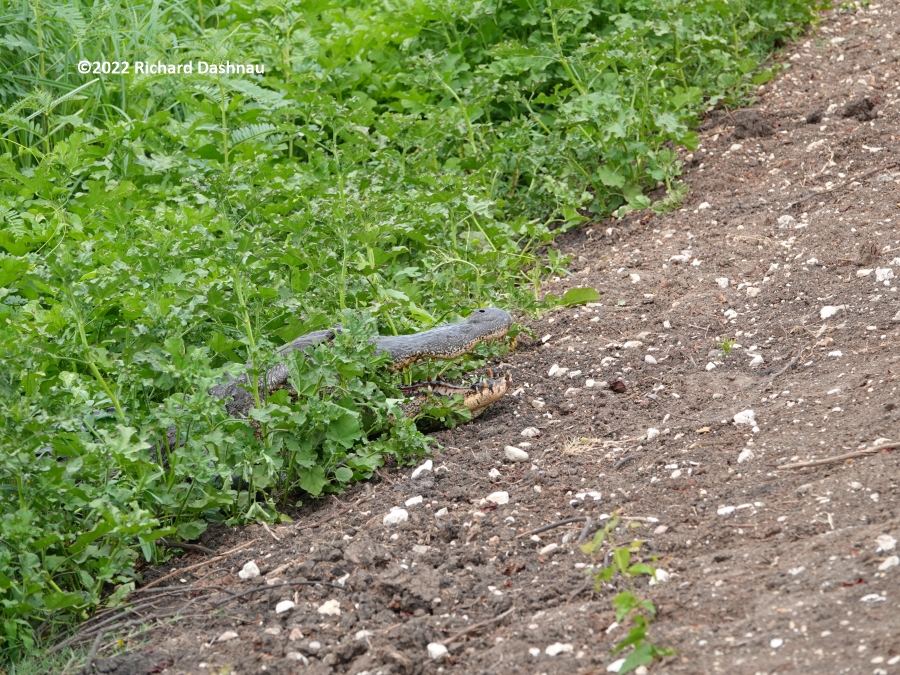
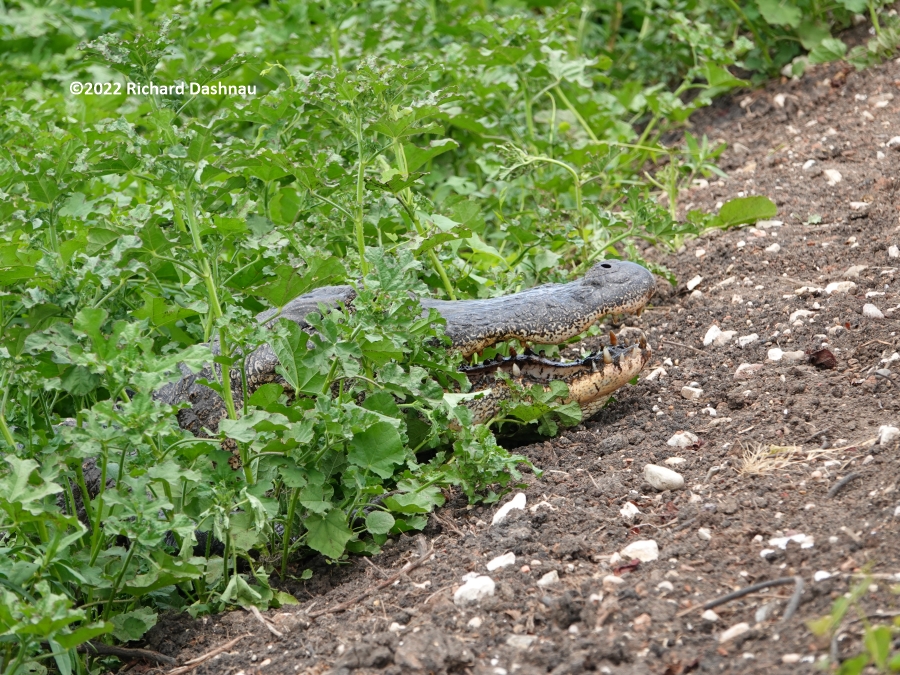
There's the
wonderful alligator high walk. The back doesn't flex much,
given
rigidity by the rows of osteoderms under the skin.
Front and
back
legs on opposite sides move forward.
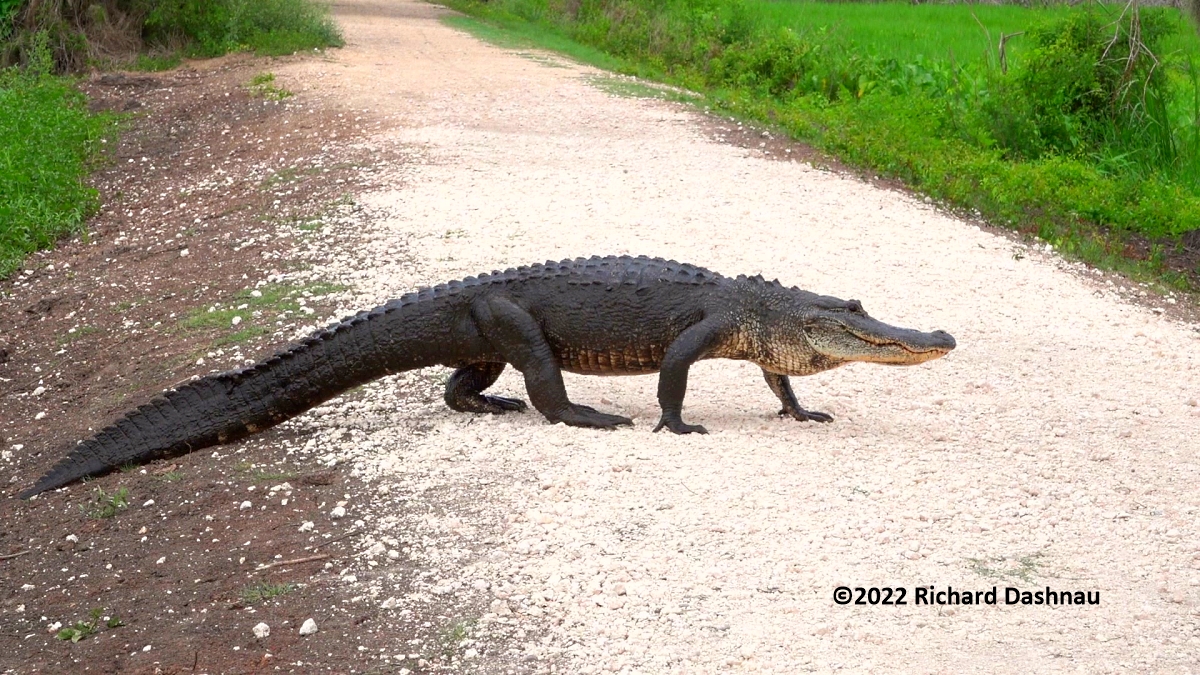
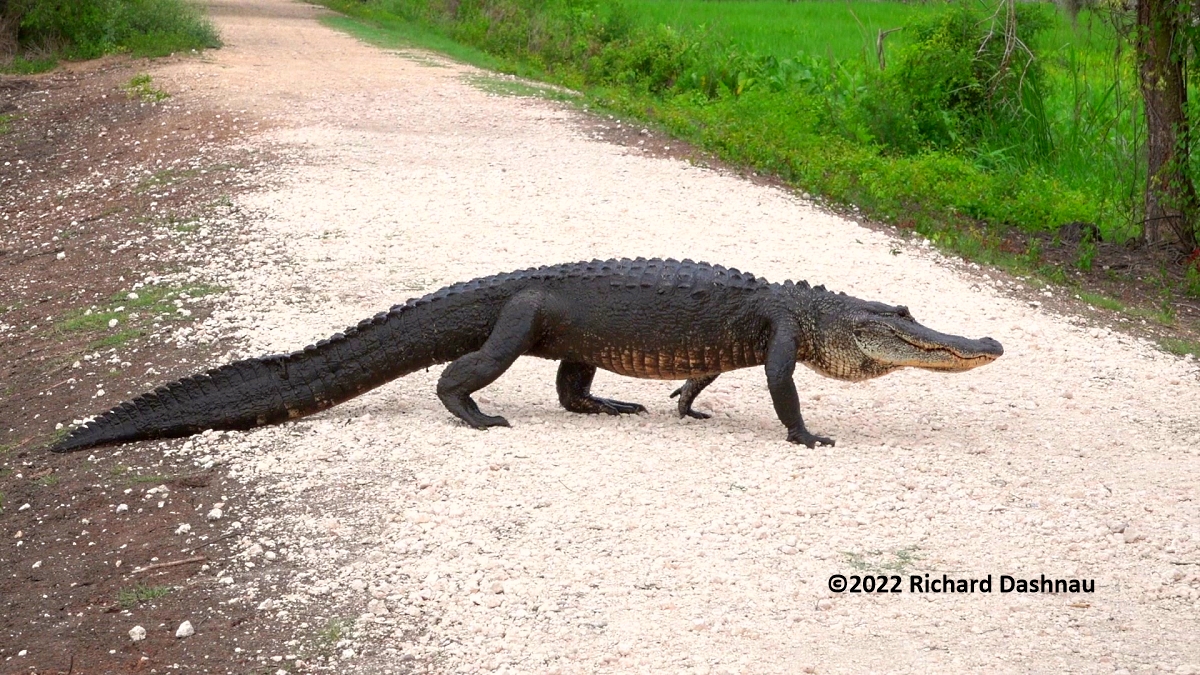
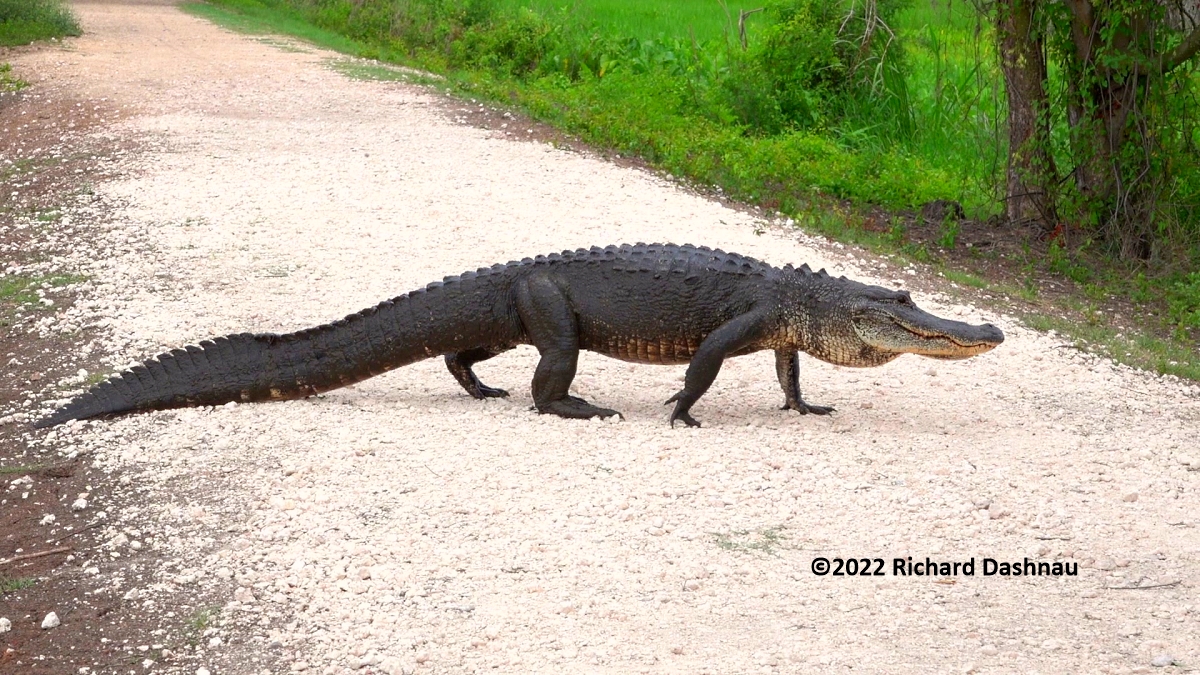
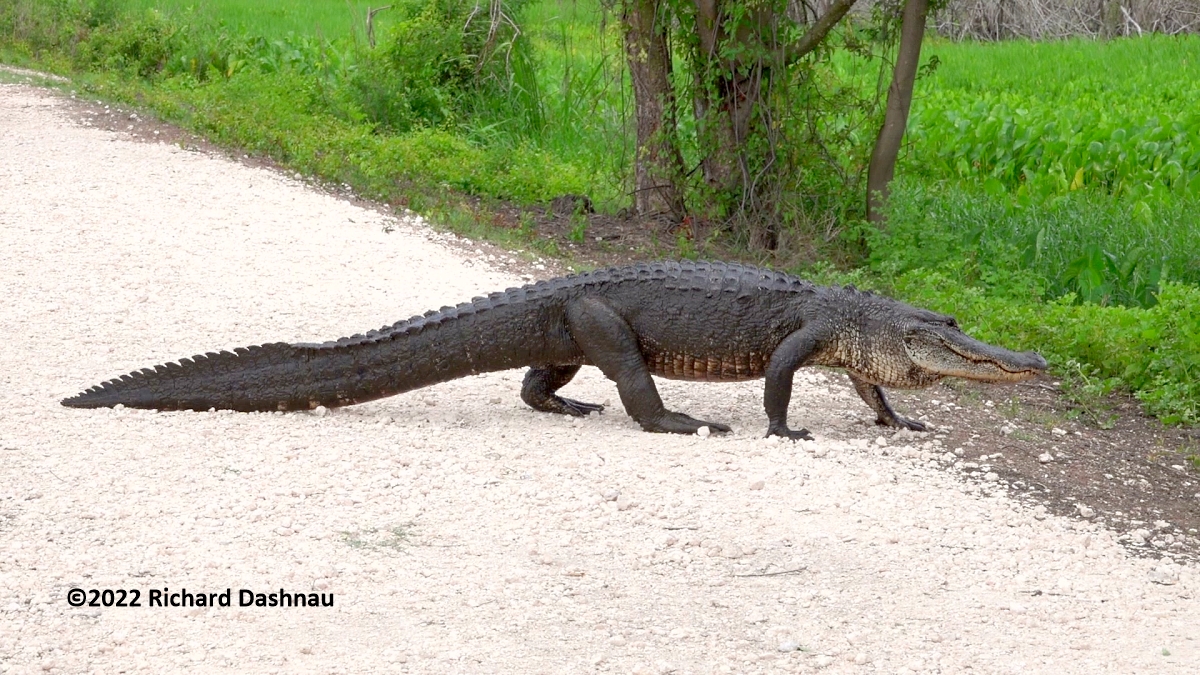
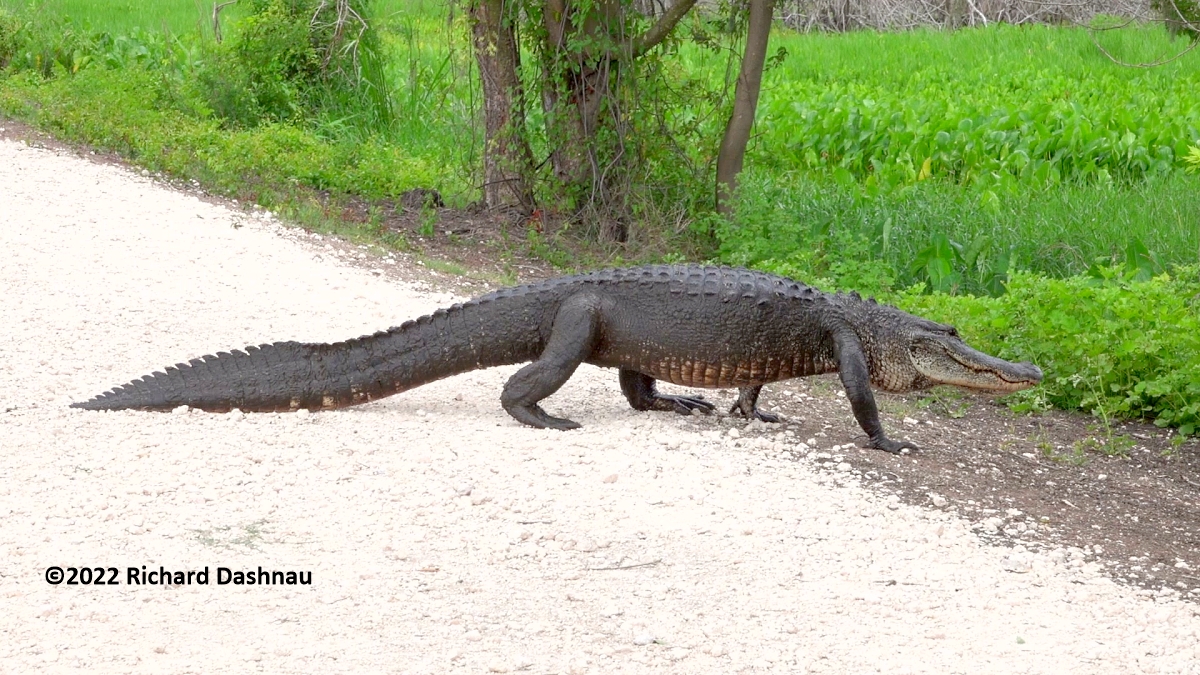
And,
this
page shows alligators at the park, on land, near various
landmarks at the park.
Go back to my main alligator page, Alligators
Go
back to my home page, Welcome
to rickubis.com
Go
to the main
alligator page















































